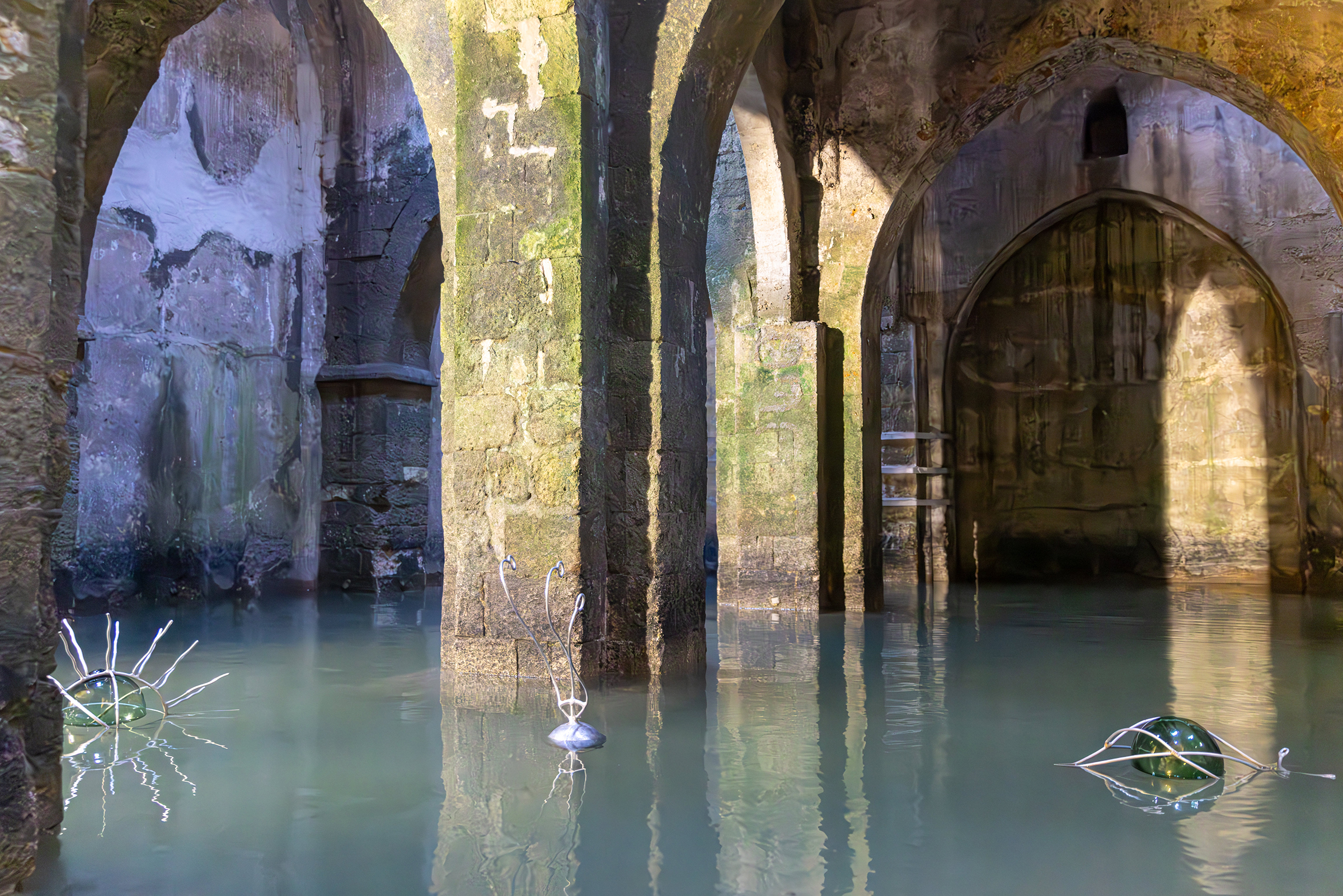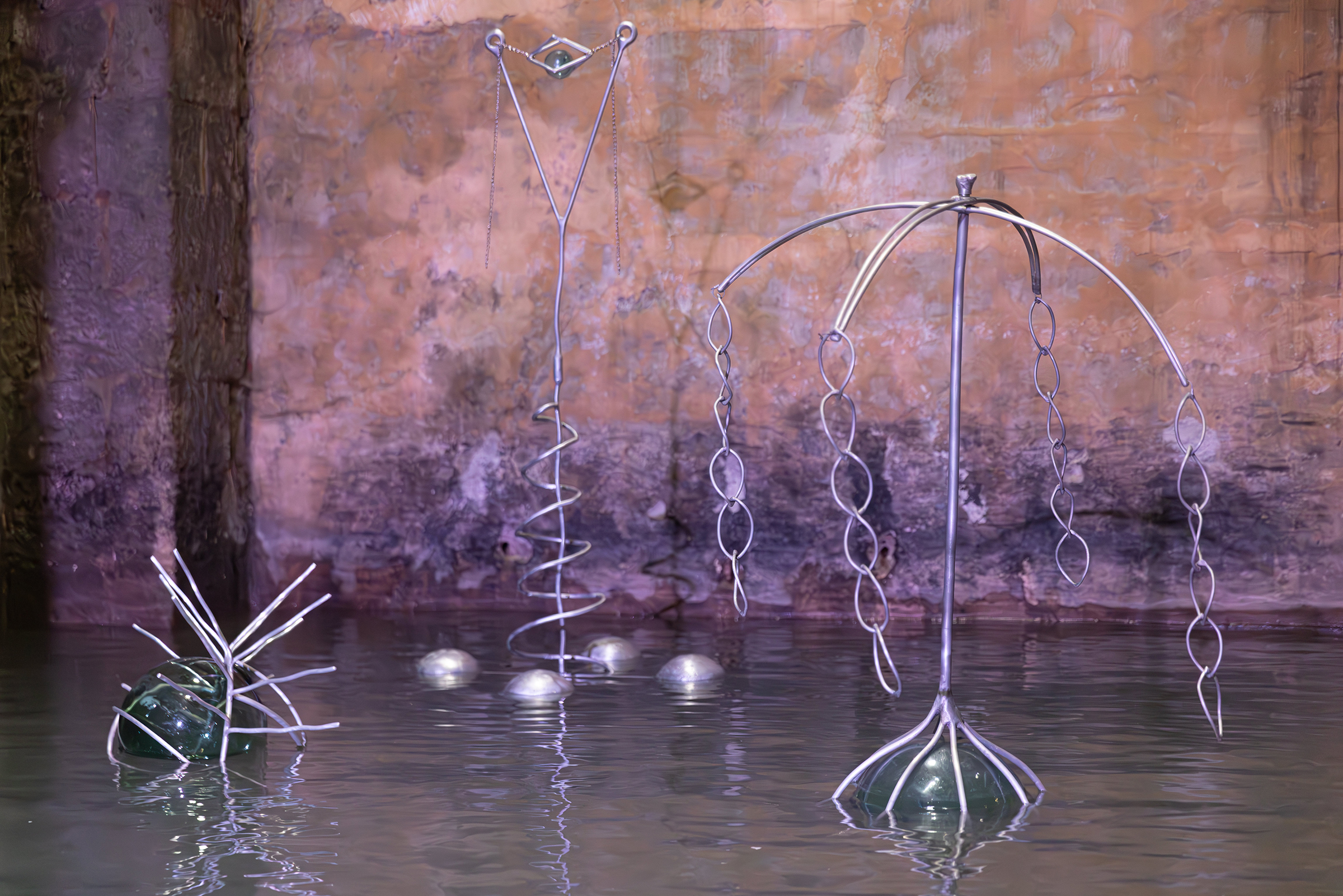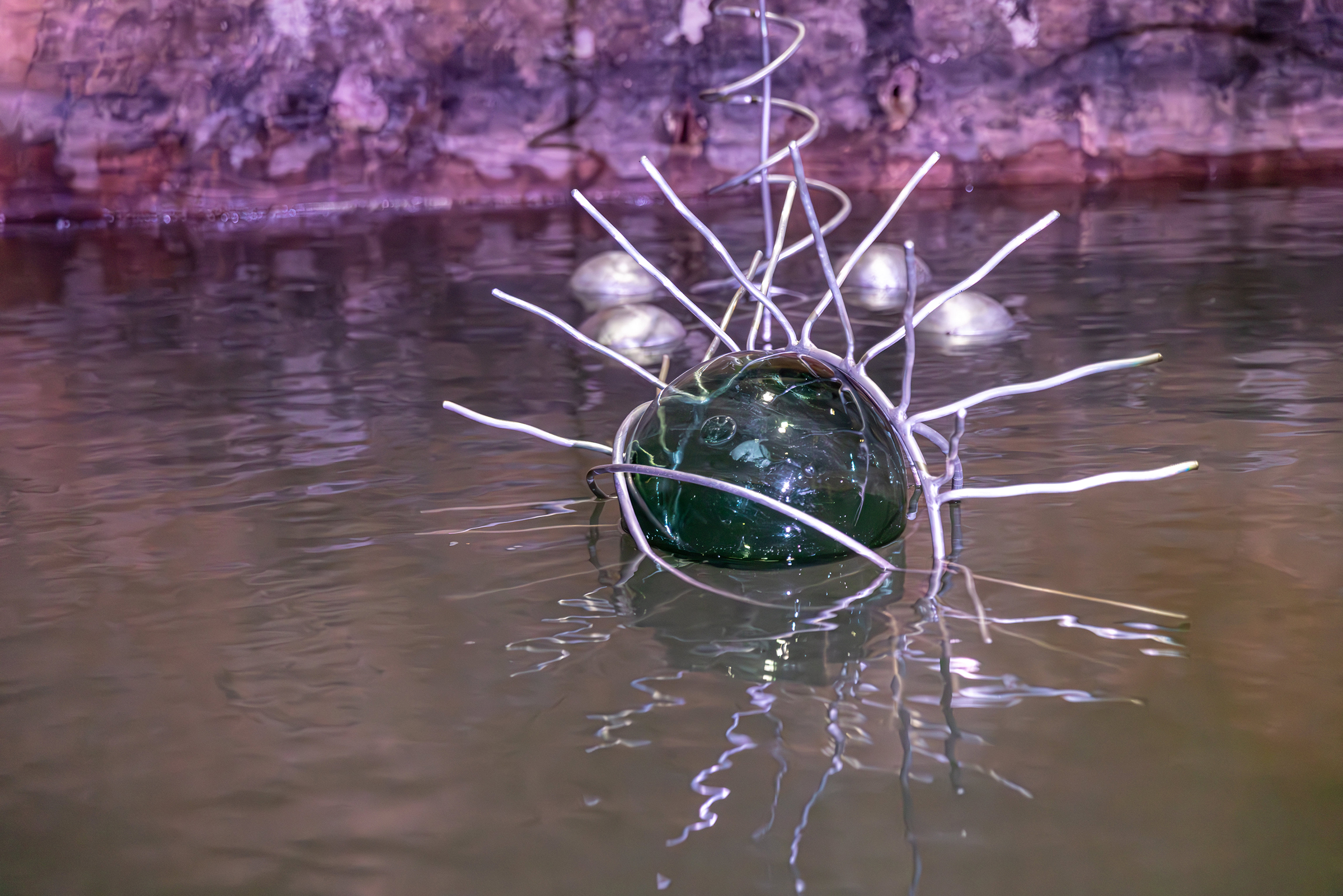Daniel Rothbart: RamleAnthropocene
by curator Dr. Smadar Sheffi


Daniel Rothbart’s aluminum and glass sculptures seem to hover in the majestic structure of the Pool of Arches, like signs of an unfamiliar language, or perhaps dancing creatures. They elude definition, with an almost surrealist quality echoing the essence of the water itself – fluid, flowing, and incessantly transformative.
The current era has been defined as the Anthropocene, a geological period in which, for the first time, human activity is the major factor impacting the ecosystem. Climate change, perceived in the past as phenomena that were destined to happen in a distant future, has materialized and is changing the world and the way we conduct ourselves.
Ecological issues have recurred in Rothbart’s art over the past decades in which he has been engaging with water from the aesthetic and spiritual aspects. He installed works in water sites in various locations, such as Everything Flows, Nothing Stays The Same (For Enrico Pedrini) installed in hot mineral springs, Aachen Germany (2012), and, in the middle of the pandemic, Water Clocks: A Floating Sculptural Installation in the Hudson River (2021). The sculptures in the river -delicate, refined presences – created an encounter of culture and nature during a period that sharpened our recognition of the damages that humanity inflicted on the ecosystem to an unprecedented degree.

Rothbart became acquainted with the Contemporary Art Center, Ramle-CACR and the Pool of the Arches through the internet during the pandemic. The curatorial connection was formed through correspondence, Zoom, and exchanges of articles and poems. At the time it was unclear if and when life would resume its previous form, which imbued the idea for the exhibition a utopian dimension.
The Pool of Arches, built about 1,200 years ago, now a site of art and tourism, has numerous historical strata. For Rothbart, the Pool of Arches is a treasure trove of memory conserving resonances of various eras, enabling us to observe the past and contemplate the present and future. Rothbart’s sculptural language eludes categorization, with forms that are a marriage of historical styles and contemporary shapes. The sculptures, anchored with weights, move in the water, responding to the ripples created by visitors rowing through the space.
Glass balls, a recurring motif in Rothbart’s oeuvre, reappear in the works made especially for RamleAnthropocene. They are associated with the glass industry that was prevalent during the Muslim rule in Eretz Israel; many glass vessels were found in Ramle from that era. The glass balls are strung together, evoking broad associations, from marine life and kabbalistic Sephirot.

Rothbart embarks on a quest through the elemental and primeval, realms of the twilight of history, culture, and rationalism. The “shattering of the vessels” (in Hebrew, “Shevirat haKeilim”) seeks to explain the basic diversity and multiplicity in Creation. Here the round whole vessels relate to the primordial moment in which the Divine Light was concentrated before being shattered to create our universe. The sculptures unify the organic and the structured, with forms that symbolize rays of light or branches, echoing concrete images of nature.
With the free marine forms, Rothbart points to the problematic categorization of living things into flora, fauna, and humans, thus implying ancient geological eras, when the Tethys Sea covered our region in prehistoric times. He also refers to the decrease in biodiversity, one of the grave problems of our time. The kinetic sculptures blur the boundary between animate and inanimate. In the constantly changing light in the Pool, they seem to challenge the difference between genuine and imagined.
Experiencing art while rowing through water differs from viewing art in other venues. The scope of Rothbart’s installation reveals itself gradually. The sculptures, elegant entities, seem to rise from the Pool and reflect a memory that looks futuristic as in past descriptions of the future.

The Pool of Arches, which survived the 11th century earthquake that devastated the city and the many changes of regime in the region, is inspirational for contemplating processes affecting water. The level of oceans and seas is rising, endangering hundreds of millions of people, while the amount of potable water is decreasing. Issues of conserving water – fast becoming a rare resource – are extremely relevant. Rothbart’s installation imbues the issue with metaphysical shadings as well – the water that enables life in the present and the future, while conserving memory of ancient times, synchronizes time periods.
***
In Invisible Cities, Italo Calvino writes about “Isaura, city of the thousand wells…The city’s gods, according to some people, live in the depths, in the black lake that feeds the underground streams. According to others, the gods live in the buckets that rise, suspended from a cable, as they appear over the edge of the wells…”
Rothbart’s sculptures in the Pool of Arches are about life, reflecting the relationship of humans to the ecosystem. The Pool forms an alternative reality space within the urban setting, and metaphorically, within time. In this place that can perhaps house gods, pulsing with primordial memory, Rothbart’s wondrous creatures flourish.
